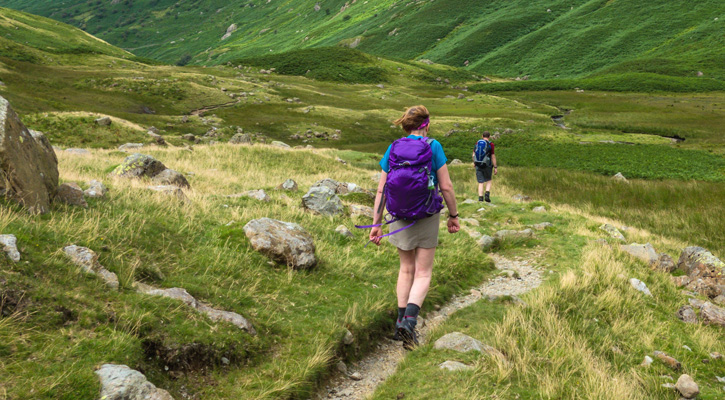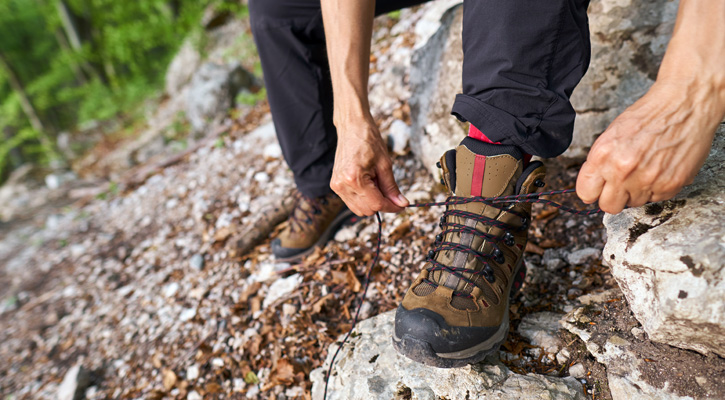
When shopping for hiking gear, the high price of hiking socks might surprise you. Regular socks cost much less, so what makes these so special?
Hiking socks are expensive because they are made with high-quality materials and advanced designs that offer durability, comfort, and protection.
These socks are crafted from materials like merino wool, which provide excellent moisture-wicking and temperature control. The costs involved in producing such specialized materials add to the price.
Additionally, hiking socks include features like reinforced heels and toes that help prevent blisters and discomfort during long hikes.
The production process also involves careful engineering to ensure they fit well and last through wear and tear. You’re paying for the technology that allows you to enjoy your outdoor adventures without worrying about your feet feeling uncomfortable or damp.
Material Costs
The high cost of hiking socks can often be traced back to two main factors: the use of premium materials and the latest technology in fabric production.
The video will be loaded from YouTube.com, a third party. If you play it, you accept their terms of service, and their use of cookies.
Premium Fibers and Fabrics
Hiking socks often use merino wool, nylon, and spandex for their desirable qualities. Merino wool is known for its softness and natural moisture-wicking abilities. It’s quite different from regular wool, which makes it more expensive.
Merino wool costs more because it comes from Merino sheep, which require specific care and living conditions. Nylon adds durability, while spandex provides stretch. These materials are chosen for their performance but come at a higher price, reflecting their specialized roles.
Technological Advancements
Modern hiking socks benefit from new technological methods in fabric weaving and finishing. Advanced machines create seamless designs and specific cushioning zones, which improve fit and comfort. These socks also incorporate moisture management technology, which helps keep your feet dry during long hikes.
Developing and maintaining this technology adds to the cost. Companies invest heavily in research to find the best ways to enhance performance. This emphasis on tech creates a better but more expensive product for enthusiasts who value quality and comfort.
Manufacturing and Quality Control
Hiking socks are often pricey because of specialized production methods and high testing standards. These ensure the socks have features like durability, comfort, and moisture-wicking capabilities that many hikers need.

Specialized Production Processes
Hiking socks are crafted using advanced knitting techniques. This includes sourcing high-quality materials like merino wool, synthetic fibers, and blends. These materials help with moisture control and provide cushioning.
Machines used in their production are often quite advanced, allowing for precise stitching and seamless designs. This prevents blisters and increases comfort.
The process also includes adding special features like extra padding in certain areas and ventilation zones for breathability. These processes require skilled workers and specialized technology, adding to production costs.
Rigorous Testing Standards
Quality control in hiking socks involves many testing stages to ensure performance in various conditions. The socks are tested for durability, moisture management, and fit. This includes stretch tests, checking how well they return to their original shape after being worn.
Many brands perform field tests. These tests involve real users hiking in different terrains and weather to provide feedback. This ensures every pair offers comfort and protection.
Further testing includes assessing colorfastness and shrinkage after washing. All these tests mean added time and resources, which increase the cost but help ensure high-quality products.
Brand and Design
Hiking socks can be pricey due to carefully crafted designs and strategic brand positioning. Brands focus on comfort, performance, and style, which influences the cost.

Innovative Designs
Hiking socks use cutting-edge materials and techniques. Moisture-wicking fabrics keep your feet dry during long hikes. Cushioning in key areas provides comfort and reduces the risk of blisters. Reinforced heels and toes increase durability.
Socks often feature mesh zones for breathability and compression for support and improved blood flow. These designs are essential for hikers who spend hours on trails. Each feature costs more to produce but adds value and functionality to the sock.
Marketing and Brand Positioning
Brands position themselves as specialists to justify higher prices. They use influential marketing to highlight their expertise and innovative products.
Many brands sponsor famous hikers or events to increase visibility and build a reputation for quality. They create a sense of community among users, which fosters brand loyalty. The brand’s status and exclusivity often lead to higher prices.
Some brands also promote eco-friendly materials, appealing to environmentally conscious consumers. This adds another layer of prestige and often increases costs due to sustainable material sourcing.
Durability and Performance Features
Hiking socks justify their price because of their focus on durability and performance. They are crafted to ensure long-lasting use and prevent blisters. Materials used in these socks are designed to handle rough trails and extreme conditions, providing comfort in varied environments.
Enhanced Comfort and Support
Quality hiking socks provide exceptional comfort. They are designed with cushioning in key areas like the heel and toe. Arch support is another crucial feature, reducing foot strain during long hikes.
Some models even have reinforced heel and toe areas to improve durability. This kind of support makes hiking easier on your feet, helping you stay active for longer periods without discomfort.
Moisture-Wicking and Temperature Regulation
Hiking socks excel at keeping your feet dry. They use moisture-wicking fabrics that move sweat away from your skin, preventing blisters. These socks are often made from wool blends, which help regulate temperature.
This means your feet stay warm in cold weather and cool when it’s hot. This balance of moisture control and temperature regulation ensures a comfortable hiking experience throughout the year.
Target Market and Distribution
Hiking socks are priced the way they are due to the different factors involved in targeting specific markets and the choices of retail channels. Understanding these elements helps explain the pricing.
Outdoor Enthusiasts and Professional Hikers
Hiking socks are designed for people who spend a lot of time outdoors. This group includes casual hikers, those who enjoy nature walks, and professional hikers who tackle rigorous trails regularly.
Professional hikers need socks that offer high performance, durability, and comfort. Designing socks that meet these needs can be costly, as they involve advanced materials and quality workmanship.
Casual hikers may also seek comfortable and reliable socks, willing to invest in higher-priced options for a better experience.
The target market is willing to pay a premium for top-quality socks due to the ongoing need for comfort and longevity during outdoor activities. Brand reputation and marketing also play roles in targeting each group.
Selective Retail Channels
Hiking socks are sold through specific channels to reach their key audience effectively. Outdoor specialty stores and online platforms are popular choices.
Specialty stores provide expert advice to customers and build a sense of trust and community among outdoor enthusiasts. Meanwhile, online retailers offer convenience, with a wide selection and customer reviews.
High-quality brands may choose only select channels that align with their brand image. This strategy helps maintain exclusivity and justifies a higher price point.
